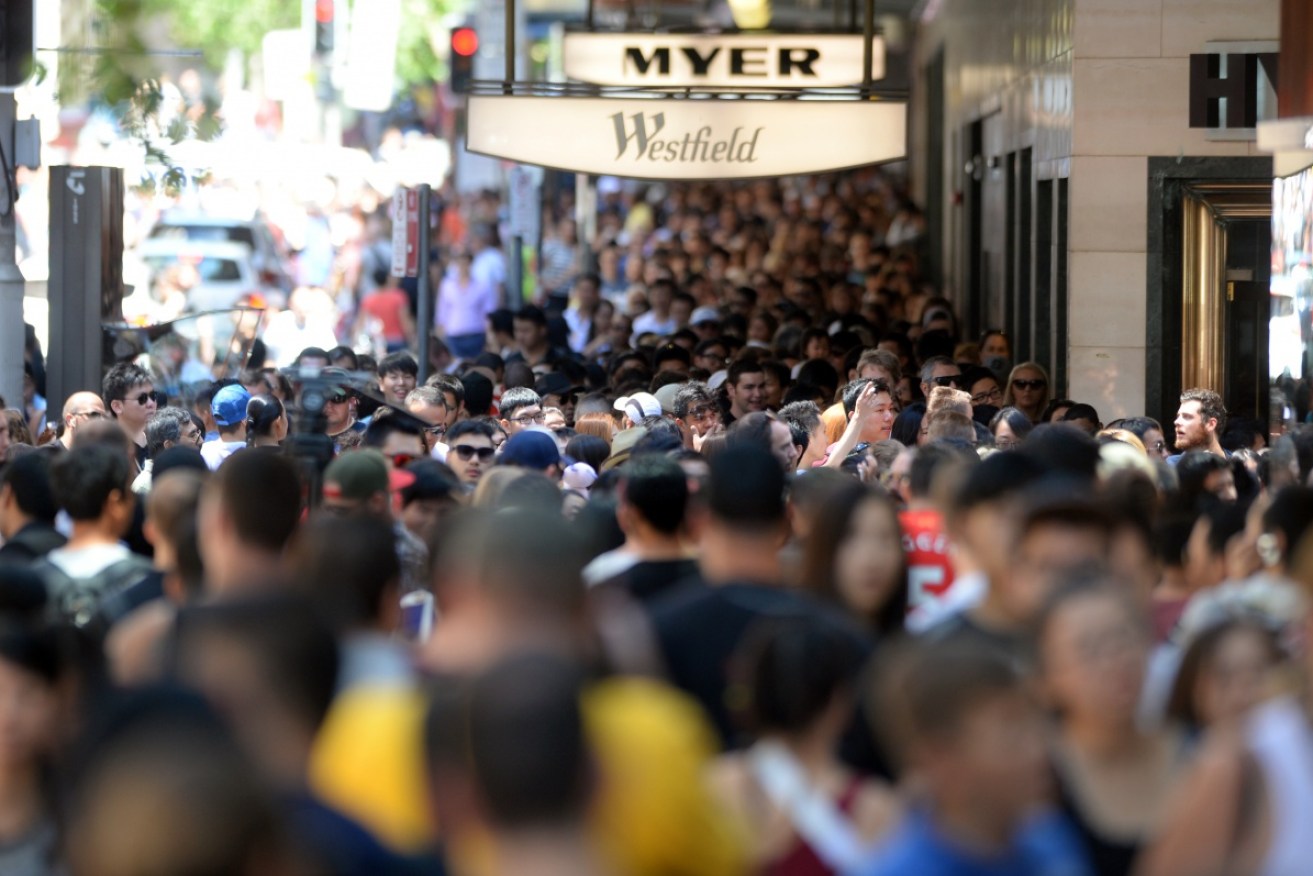Disappointing retail figures cast doubt over economic policy


Retail turnover growth slowed to 0.2 per cent in September. Photo: AAP
Fresh data has revealed successive interest rate cuts and tax cuts have so far failed to boost the economy.
Figures released by the Australian Bureau of Statistics show that retail spending grew just 0.2 per cent in September, following a 0.4 per cent rise in August.
Spending increased on books, cafes and restaurants.
But significant drops in clothing and department store sales dragged down the headline figure.
The disappointing numbers come despite income tax cuts and interest rate cuts in June and July – prompting economists to call for greater government spending.
“The ideal solution is fiscal policy,” Indeed APAC economist Callam Pickering told The New Daily.
“The federal and state governments could do a lot more to support the economy, but that’s not a discussion we’re having, as the federal government is adamant that they’re going to get their budget surplus, and any fiscal stimulus package would put that at risk.”
Weak wages growth was the key to understanding why the government’s tax cuts had failed to lift consumer spending, Mr Pickering said.
That, and the fact the government’s low-and-middle-income tax offset lifted the average tax return by just $421, far less than the $1080 originally promised.
“What we’ve seen from the data is that the full stimulus effect of these rate cuts and tax cuts has been a lot less than most thought,” Mr Pickering said.
“That suggests the retail sector remains quite weak. And that’s probably not going to change any time soon.”
Mr Pickering said retail spending would only lift if wages growth ticked up significantly.
In the 12 months to June 30, 2019, pay packets on average grew by just 2.3 per cent, well below the historical average of 3 to 4 per cent.
Mr Pickering said recent experience in the US and UK suggested wages would only pick up once unemployment dropped into “the low 4s”.
“That’s where we need to get to, and right now we’re a long way away from that,” he said.
“And there’s so much that we could be doing [to get there]. With the economy where it is, and with monetary policy where it is, I would say nothing should be off the table.
“All options should be open to discussion to get the economy ticking over – whether it’s spending plans with regard to infrastructure, whether it’s direct handouts, or whether it’s putting through structural changes to boost productivity.”
Independent economist Stephen Koukoulas said it would take a few more months for the full benefits of the RBA rate cuts to flow through to increased consumer spending, and that it was therefore too early to write them off entirely.
But he told The New Daily the economy was nonetheless crying out for more stimulus.
“There are other parts of the economy that are doing OK, and we’ll probably see bottom-line GDP back at 2 point something over the next couple of quarters, but growth is still pretty soggy,” Mr Koukoulas said.
“It’s linked to very weak wages growth and a slight weakening in the labour market over the last six months or so – and they’re not the dynamics that lead to a pick up in consumer spending.”
Even if the tax and interest rate cuts were having some impact, Mr Koukoulas said, governments should be lifting their spending.
Tweet from @TheKouk
“Don’t get hung up on the surplus. There are tens of thousands of people who are unemployed as a result of the economy being weaker than it should be, so do something,” Mr Koukoulas said.
“Work with the RBA to get a bit of a kickstart to the economy, to get business investment and business hiring of staff picking up.
“These things don’t happen and change overnight, but if you do it now, prior to the end of the year, in your MYEFO (Mid-Year Economic and Fiscal Outlook) document, you’ll probably see something benefits from it in 2020.”
The calls for greater spending echo similar sentiments expressed by RBA governor Philip Lowe, and come just weeks after the IMF downgraded its estimate of Australia’s economic growth this calendar year from 2.7 per cent to 1.7 per cent.









